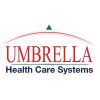-
About
- About Listly
- Community & Support
- Howto
- Chrome Extension
- Bookmarklet
- WordPress Plugin
- Listly Premium
- Privacy
- Terms
- DMCA Copyright
- © 2010-2025 Boomy Labs

Listly by Umbrella Health Care Systems
Cholesterol is a waxy substance found in your blood. Your body needs cholesterol to build healthy cells, but high levels of cholesterol can increase your risk of heart disease.
With high cholesterol, you can develop fatty deposits in your blood vessels. Eventually, these deposits grow, making it difficult for enough blood to flow through your arteries. Sometimes, those deposits can break suddenly and form a clot that causes a heart attack or stroke.
High cholesterol can be inherited, but it's often the result of unhealthy lifestyle choices, which make it preventable and treatable. A healthy diet, regular exercise and sometimes medication can help reduce high cholesterol.
https://www.umbrellamd.com/e-visit

Has your doctor said you have high cholesterol? Then you know you need to change your diet and lifestyle to lower cholesterol and your chance of getting heart disease. Even if you get a prescription for a cholesterol drug to help, you'll still need to change your diet and become more active for heart health. Start with these steps.
https://www.umbrellamd.com/e-visit

Your body needs a small amount of cholesterol. But many people have too much, especially the “bad” kind, or LDL cholesterol. That can happen if you eat too much saturated fat, found mainly in foods from animals. If your LDL level is too high, plaque can build up in your heart's arteries and lead to heart disease. The “good” cholesterol, HDL, helps clear LDL from your blood.
https://www.umbrellamd.com/e-visit

It’s easy to eat too much, especially when you eat out and the portions are huge. That can lead to weight gain and higher cholesterol. What’s a true portion? There’s a “handy” way to tell. One serving of meat or fish is about what fits in your palm. One serving of fresh fruit is about the size of your fist. And a snack of nuts or serving of cooked vegetables, rice, or pasta should fit in your cupped hand.
https://www.umbrellamd.com/e-visit

Load your plate with fruits and vegetables -- aim for five to nine servings each day -- to bring down your LDL level. Antioxidants in these foods may provide the benefit, along with fiber. And you may eat less fatty food if you fill up on produce. Bonus: You'll also help lower blood pressure and keep your weight in check.
https://www.umbrellamd.com/e-visit

You can eat fish twice a week. It’s a great source of protein and omega-3s, which are a type of fat your body needs. Omega-3s help lower levels of triglycerides, a type of fat in the blood. They may also cut down on cholesterol, slowing the growth of plaque in arteries. Go for fatty fish, such as salmon, tuna, trout, and sardines. Grill, roast, bake, or broil, but don’t fry them.
https://www.umbrellamd.com/e-visit

A bowl of oatmeal is a smart choice. It fills you up, making it easier not to overeat at lunch. The fiber also curbs LDL cholesterol. Whole grains aren’t just for breakfast. You’ve got plenty of options to try later in the day, such as brown or wild rice, popcorn, and barley.
https://www.umbrellamd.com/e-visit

Need a snack? A handful of almonds, pecans, pistachios, walnuts, or other nuts is a tasty treat. They are high in monounsaturated fat, which lowers LDL "bad" cholesterol but leaves HDL "good" cholesterol alone. Studies show that people who eat about an ounce of nuts a day are less likely to get heart disease. Keep the portion small, so you limit fat and calories. And avoid those covered in sugar, chocolate, or a lot of salt.
https://www.umbrellamd.com/e-visit

You need some fat in your diet, but probably less than you think. Plus, the type of fat matters. Unsaturated fats -- like those found in canola, olive, and safflower oils -- lower LDL "bad" cholesterol levels and may help raise HDL "good" cholesterol. Saturated fats -- like those found in meat, full-fat dairy, butter, and palm oil -- raise LDL cholesterol. Remember, good fats have just as many calories, so use just a bit.
https://www.umbrellamd.com/e-visit

Beans and whole grains such as brown rice, quinoa, and whole wheat have more fiber and don’t spike your blood sugar. They will lower cholesterol and make you feel full longer. Other carbs, like those found in white bread, white potatoes, white rice, and pastries, boost blood sugar levels more quickly so you feel hungry sooner, which can lead you to overeat.
https://www.umbrellamd.com/e-visit

Just half an hour of physical activity 5 days a week can lower your bad and raise your good cholesterol levels. More exercise is even better. Being active also helps you reach and keep a healthy weight, which cuts your chance of developing clogged arteries. You don't have to exercise for 30 minutes straight. You can break it up into 10-minute sessions. Or go for 20 minutes of harder exercise, like running, three times a week.
https://www.umbrellamd.com/e-visit

It's simple, convenient, and all you need is a good pair of shoes. Aerobic exercise ("cardio") such as brisk walking lowers the chance of stroke and heart disease, helps you lose weight, keeps bones strong, and is great for your mood and stress management. If you're not active now, start with a 10-minute walk and build up from there.
https://www.umbrellamd.com/e-visit

Umbrella Health Care Systems provide complete solution for health related problems.
https://www.umbrellamd.com/